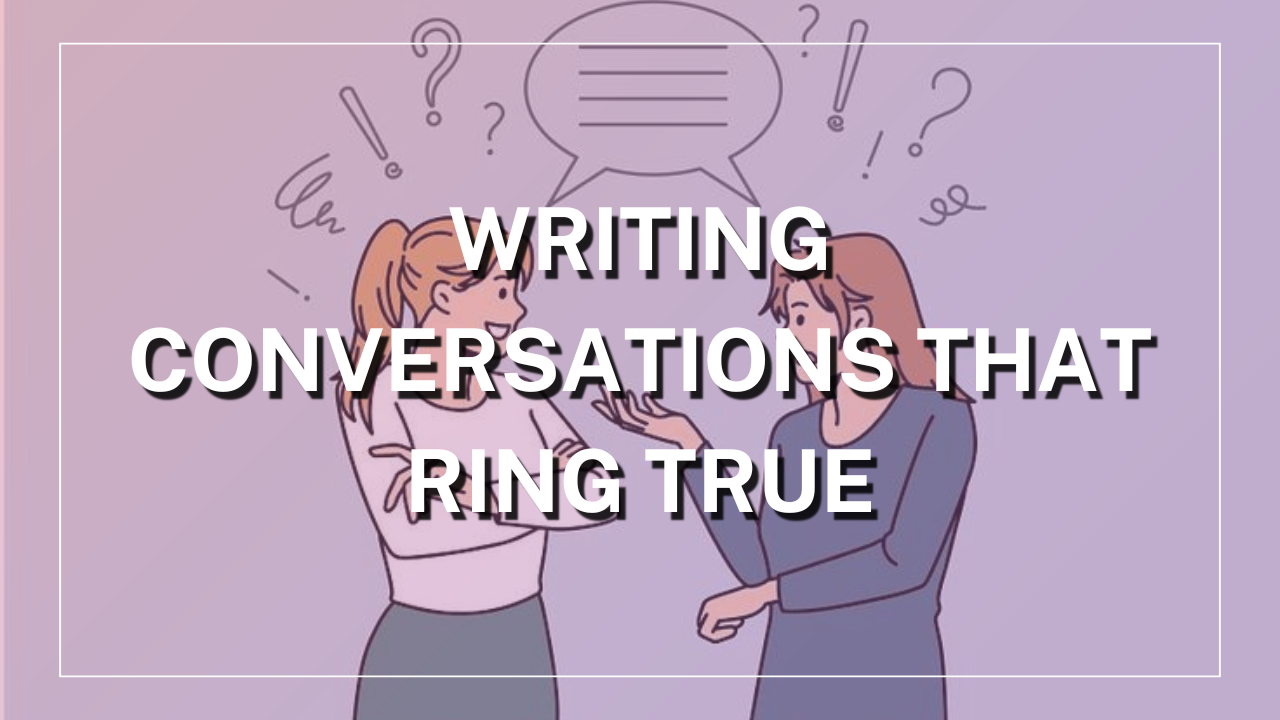An important element of building a narrative is dialogue writing. It is through dialogue that the readers get insights into inter-character relationships, thoughts, and emotions. Dialogues often play the role of the backdoor that allows your readers to directly understand the characters.
Writing conversations that ring true can be challenging, but are worth the effort. Here are some strategies to implement while writing dialogues.
1. Understanding Character and Background:
Realistic dialogue starts with well-developed characters. Your characters’ dialogue defines who they are. You can build conversations by considering the characters’ age, education, cultural background, and emotional state. The conversational tone should be built upon the characters’ personalities. Remember that different characters would have different patterns of speech, and the relation between characters would also affect the tone of the dialogue. Understand that the story’s setting, period, and cultural background play a vital role in the conversational tone as well.
For example, a teenager might use more slang and informal language, while a professor would speak precisely and formally. Friends would have a casual tone of conversation, whereas the conversation between the protagonist and the antagonist would be intense.
If you are writing a story in a historical timeline, you can’t use “What’s up, dude? Are you coming for the party tonight”. Instead, you can use “Mr. Darcy, will you be attending the royal ball tonight?”
2. Keep It Natural:
Dialogues are what your characters speak, and it is important to note that speaking isn’t practiced to be perfect in every instance. Realistic dialogues are required to have slip of tongue (where characters might say something inappropriate or unintentional), jargon, interruptions (where conversations are unfinished due to plot interruption or another character’s intervention), fillers (words like “yeah”, “you know”) and trail offs. Make sure that dialogues don’t sound robotic and pretentious.
Examples can be “Sure, I guess. But what about, you know, the thing we talked about?” or “Yeah, we can go to the park.”
3. Context:
Dialogues aren’t only for giving insights into conversations between characters, they can often be used for explaining the plot of the narrative or background information. Try not to make the conversation full of information, rather give contextual hints about the story’s background or plot. It can also be used to describe the characters’ emotions, biases, and personality traits. Conversations can be used to reveal inner motives and hints about the character’s backstory by repeating iconic phrases or phrases only a particular group of people would understand.
For instance, if you are writing a story about a serial killer, you can implement an iconic dialogue for the killer like, “You shouldn’t mess with someone who has nothing to lose,” and at some point in the story, a normal-looking character might say the same dialogue and is discovered by the protagonist.
4. Sub-text:
People don’t always say what they mean, often the essence of the words is different from the direct meaning. You can implement this into your narrative by writing dialogues that are intended to mean something other than the direct meaning. This can be done by aligning the plots of the story, body language, and phrases having private meanings between particular characters. You can use inside jokes and abbreviations understood by certain characters to make the dialogues intimate and realistic as most people have different meanings for phrases and inside jokes in real life.
Example: “Are you okay?” Anne asked. “I’m fine,” Bob said. This doesn’t give away the actual condition of Bob. This can be improvised as follows: “Are you okay?” Anne asked looking at Bob’s gloomy eyes. “Fine, I guess,” he said turning away. Here the readers can understand that Bob isn’t fine but is trying to hide it.
5. Read Aloud:
We often tend to write what seems grammatically correct or elongated sentences. But, such sentences when used in dialogues might make them sound pretentious and unrealistic, as people incorporate body language in conversation. Hence, it is important to check the readability and tone of the dialogue by reading it out loud. This will help you understand how the dialogue sounds in reality and allow you to improvise it by adding interruptions, fillers, or actions.
The key to writing enjoyable dialogue is a combination of knowing the behavior patterns, speaking styles, and subtext intentions your characters have. If you consider these things, your dialogue will not only move the plot forward but also deepen your character and engage overall. Dialogue should be invisible. It needs to be realistic so the reader is drawn into your world.

